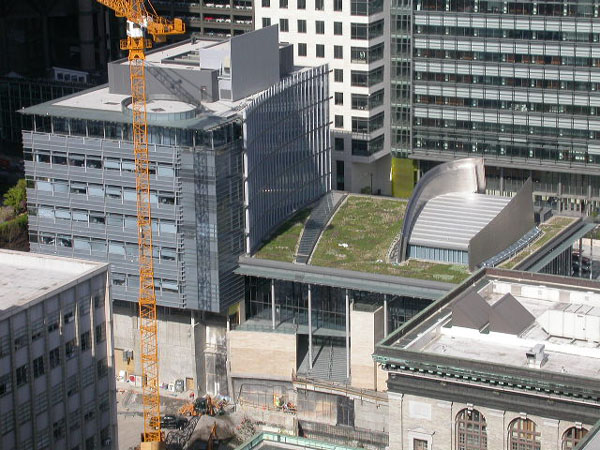Greener Than Thou

[ Seattle City Hall is LEED Gold Certified, though its energy performance is not stellar. Photo: Dan Bertolet ]
On Tuesday, Mayor Greg Nickels delivered his annual “State of the City” speech, during which he touted his intention “to make Seattle America’s green building capital.” And here’s the plan: appoint a panel to develop a strategy to reduce building energy use by 20%.
Meanwhile, two Los Angeles City Council Committees just voted (registration required, or see also here) to adopt an ordinance requiring all new construction over 50,000 square feet to meet the LEED Silver green building standard. And yes, that includes privately owned buildings. The ordinance is expected to become official through a full City Council vote in a month or so. Lots of U.S. cities, including Seattle, now have LEED requirements for public buildings, but mandating LEED for private buildings is another story. Boston and Washington D.C. are the only major U.S. cities that have currently have green building code that regulates private development.
LEED ratings apply not only to energy, but also to water, site, indoor environmental quality, recycled content, and construction waste. Data collected on completed buildings has shown that LEED-certified buildings are on average 25 to 30% more energy efficient than standard buildings.
The ordinance that L.A. is adopting is likely based on the new ASHRAE 189 Green Building Standard, which is essentially a formal codification of LEED Silver. Well, it turns out that none other than John Hogan, Senior Energy Analyst for the City of Seattle, is the chair of the ASHRAE Standard 189 Project Committee.
So then, I suppose one might be tempted to ask: If Seattle hopes to be a leader in green building, does it really make sense for us to wait around for the appointment of a new panel, and then to wait for them to develop their strategies, and then to wait some more for the City to figure out if and how to implement those strategies? We have the expertise and we have the public support. What we don’t have is the time for the glacial pace of the “Seattle Process.”
As I have written before, at this point in our history, allowing the construction of buildings that have not been designed for maxiumum energy efficiency is as irresponsible as sacrificing transit for new freeway lanes.
